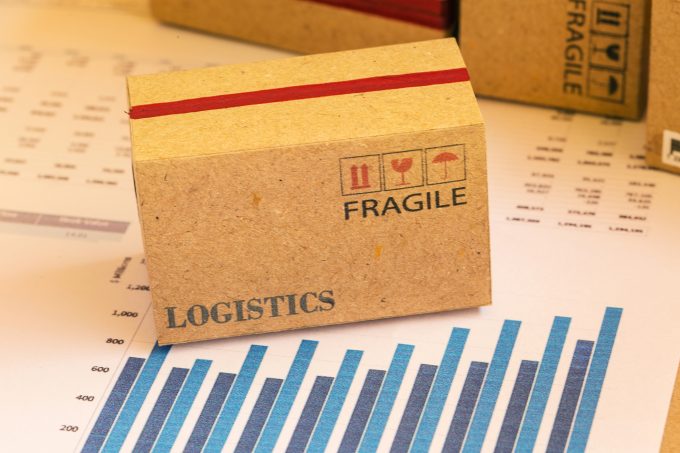Ecommerce drives growth at Liege, as Lufthansa Cargo doubles down on China
European fears of the sharp rise in Chinese ecommerce imports has not stemmed the flood. Liege ...
TFII: SOLID AS USUALMAERSK: WEAKENINGF: FALLING OFF A CLIFFAAPL: 'BOTTLENECK IN MAINLAND CHINA'AAPL: CHINA TRENDSDHL: GROWTH CAPEXR: ANOTHER SOLID DELIVERYMFT: HERE COMES THE FALLDSV: LOOK AT SCHENKER PERFORMANCEUPS: A WAVE OF DOWNGRADES DSV: BARGAIN BINKNX: EARNINGS OUTODFL: RISING AND FALLING AND THEN RISING
TFII: SOLID AS USUALMAERSK: WEAKENINGF: FALLING OFF A CLIFFAAPL: 'BOTTLENECK IN MAINLAND CHINA'AAPL: CHINA TRENDSDHL: GROWTH CAPEXR: ANOTHER SOLID DELIVERYMFT: HERE COMES THE FALLDSV: LOOK AT SCHENKER PERFORMANCEUPS: A WAVE OF DOWNGRADES DSV: BARGAIN BINKNX: EARNINGS OUTODFL: RISING AND FALLING AND THEN RISING

China’s Singles Day smashed records again for online shopping (Thanksgiving weekend is as yet uncounted). Alibaba set a new high, selling over $30.8bn worth of goods in 24 hours. Rival JD reported a 27% surge in revenue for the day.
Together the two Chinese online behemoths raked in a staggering $54bn.
The e-commerce juggernaut rolls on, seemingly unstoppable, amid lofty growth predictions. According to Fitch Solutions, e-commerce sales in the Asia-Pacific region will rise 14.2% in 2019 to reach $1.2 trillion, while the US, the second-largest market, will see $456.9bn in online sales.
While these volumes keep logistics firms busy, questions of profitability loom over the sector. After FedEx tabled gains in volume, revenues and net profit for the quarter ended August 31 – where e-commerce had been a major driver – industry analysts raised concerns about the increase in costs, up 11.6% in the integrator’s express unit.
Fuel prices have since reversed their upward momentum, but other costs are likely to rise further. One factor is the continuing emphasis on omni-channel service in the retail sector.
Not only do merchants feel compelled to offer multiple delivery options, they also know that omni-channel customers tend to spend more, according to omni-channel technology provider Veridian. This is leading to increasingly complex supply chains and a push for real-time technology and faster speed in the warehouse.
Moreover, consumer expectations are rising. They have come to expect fast delivery at low cost and value the convenience of the overall shopping experience. Increasingly they want better visibility of their shipments.
A recent survey of 1,508 online shoppers, published by Convey, a provider of a cloud-based delivery experience platform used by a number of large shippers, found that expectations regarding punctuality and convenience had gone up. Consumers expect fast, free shipping with full control over the experience, the survey concluded.
Convey found that 45.1% of respondents expect to be given a delivery time window of two hours or less. At the same time, they demand flexibility on the logistics provider side. As many as 70% expect to be able to make changes to the routing, up from 41% a year ago.
This chimes with recent reports from Pitney-Bowes and Triangle on US and UK consumers, respectively, which found that many consumers were dissatisfied with the level of service they received. For online merchants this is ominous.
According to Convey, 83.5% of shoppers are unlikely to shop again with a brand after a bad experience, and consumers hold the merchants accountable for issues with delivery; they do not want to deal with the delivery firm involved.
Alex Allen, a UK-based e-commerce and logistics consultant, notes that logistics costs largely come out of the margins of e-tailers, as consumers tend to buy from sites that offer free delivery. Nevertheless, the cost pressure on logistics firms is tight and not letting up.
“The likes of Amazon and Alibaba have huge negotiating powers in this space and tend to squeeze their suppliers continuously for lower pricing to carry large volumes,” said Mr Allen.
“The industry is very competitive and last-mile delivery providers sometimes sell their soul to create and service these volumes to create their own economies of scale.”
In the growing cross-border e-commerce arena, consolidations are critical to rein in costs, added Lucas Kuehner, global head of air freight at Panalpina.
“Only freight consolidation can make international e-commerce shipments affordable in the first place. Otherwise, transport costs, especially for air freight, would be too high and often in no relation to the price of the purchased product,” he noted.
The reliance on consolidations brings a number of challenges, Mr Kuehner pointed out. Third-party screening for compliance and security becomes difficult since the original shipper details are not transparent at the time of shipment booking; counterfeit and other illegal items can lead to delays and customs penalties; and undeclared dangerous goods pose serious risks, which require additional measures.
“For e-commerce air freight you have to know exactly what you’re doing and deliver with speed and consistency. That includes staying on top of customs as well as dangerous goods and security regulations, because nothing can go wrong,” said Mr Kuehner.
“E-commerce will remain quite a competitive field for both logistics and transport operators. For the airlines, e-commerce is quite a low density cargo and to attain the right revenue per cubic metre and yield ratios will be quite challenging, because of the competitive rate offering in this space,” said Mr Allen.
Investment in the right tools will be important, as well as a sensible pricing strategy, he added.
“Technology is a key enabler as well as the main equaliser in efforts to reduce high operating costs in this space. Pricing for profit will be the only way forward for sustainability in the end,” he said.
Comment on this article
ganesh
February 02, 2021 at 5:14 amThank you for sharing this article, I`m very appreciative and thankful to read thank you. Keep sharing.